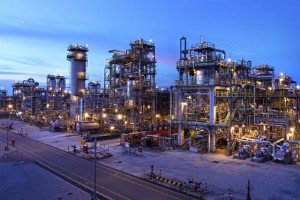 WTI and Brent futures were relatively steady during midday trade in Europe today. Fighting continued in Iraq yesterday, pushing Brent to a new nine-month high. Meanwhile, natural gas futures were higher, after a significant drop on Thursday.
WTI and Brent futures were relatively steady during midday trade in Europe today. Fighting continued in Iraq yesterday, pushing Brent to a new nine-month high. Meanwhile, natural gas futures were higher, after a significant drop on Thursday.
West Texas Intermediate futures for settlement in August traded for $106.07 per barrel at 11:26 GMT on the New York Mercantile Exchange, up 0.02%. Prices ranged from $105.81 to $106.25 per barrel. The US contract added 0.44% yesterday, and so far this week has lost about 0.1%, near a nine-month high.
Meanwhile on the ICE in London, Brent futures due in August stood for a 0.11% drop at $114.93 per barrel at 11:26 GMT. Daily high and low stood at $115.11 and $114.66 per barrel, respectively. Brent’s premium to August WTI stood at the quite significant $8.86, after last session’s closing margin of $9.01. The European contract added 0.70% on Thursday, reaching a nine-month high at $115.71 per barrel, and so far this week has gained more than 2%.
Iraq
Sunni militants, led by a group of extremists called ISIS (Islamic State in Iraq and the Levant), continued fighting security forces in many towns in the northern and western provinces of the country. Fighting was also reported at Iraq’s largest oil refinery at Baiji, which supplies 40% of Iraqi domestic fuel demand. Some 30 000 people, who work at the refinery had been evacuated earlier.
“The south of the country is not beyond the geographic reach of extremist groups seeking to undermine the government,” analysts at Barclays said in a note, cited by Bloomberg. “We believe that any significant uptick in unrest in the south, even if oil facilities were spared, would likely accelerate the exodus of foreign oil workers out the country.”
Authorities assured that the military were in control of the refinery, and that the militants were being pushed back. The government also insisted insurgents do not threaten Baghdad, nor the southern oilfields, which account for 90% of Iraqi oil output.
Iraq is OPEC’s second-top oil producer, and exports some 3 million barrels per day from its main southern terminal at Basra.
US outlook
The US posted several economic readings yesterday. Initial applications for unemployment benefits for the week ended June 14 were logged at 312 000, beating expectations and improving on the 317 000 for the previous week. Meanwhile, continuing claims for the week through June 7 were also better than expected at 2.561 million, which is the lowest reading since October 2007.
“The trend in initial claims is good,” Ryan Sweet, senior economist at Moody’s Analytics Inc. in West Chester, Pennsylvania, said for Bloomberg before the report. “The job market continues to heal.”
Philadelphia Fed Manufacturing Index for June was also revealed on Thursday. The figure was logged at 17.8, beating expectations and improving on May’s 15.4 reading.
Previously, the US Energy Information Administration (EIA) posted its weekly oil inventories report for the seven day through June 13 yesterday. The log revealed a smaller-than-expected drop for crude supplies, which declined by 0.6 million barrels. Imports of crude had slightly increased after dropping 20% over the previous two weeks. Meanwhile, gasoline stockpiles grew, as the report logged a 10% increase in motors gasoline production.
Natural gas
Front month natural gas futures, due in July, added 0.46% at the New York Mercantile Exchange to trade for $4.605 per million British thermal units at 11:28 GMT today. Prices ranged from $4.558 to $4.614 per mBtu. The contract dropped 1.61% yesterday, and so far this week the blue fuel has lost more than 3%.
The Energy Information Administration’s (EIA) reported on natural gas stockpiles for the week through June 13 yesterday. The log revealed a gain of 113 Billion cubic feet (Bcf) for inventories, while analysts at NatGasWeather.com had suggested a 105-110 Bcf injection. The 5-year average gain for the week is 85 Bcf.
Inventories levels remain 29.1% below last year’s readings for the same week, and although the deficit has been constantly shrinking, the US is entering summer air-cooling season, when injections will probably be smaller. The above-normal temperatures over the US recently will probably dent gains in the following report next week, which will cover the seven days ending today.
Other analysts suggest inventories gains will probably remain high for the weeks to follow, as updated weather patterns project slightly cooler weather.
“We had to dial back on our power expectations,” Teri Viswanath, director of commodities strategy at BNP Paribas SA in New York, said for Bloomberg. “The market expectation was that the next several releases would begin to show a slower build in inventories. That certainly was countermanded by the weather update.”
Power demand usually spikes during summer, as air conditioners are put to work, and power stations account for 30% of US natural gas consumption. Usually there is a direct correlation between rising summer temperatures and natural gas prices.





